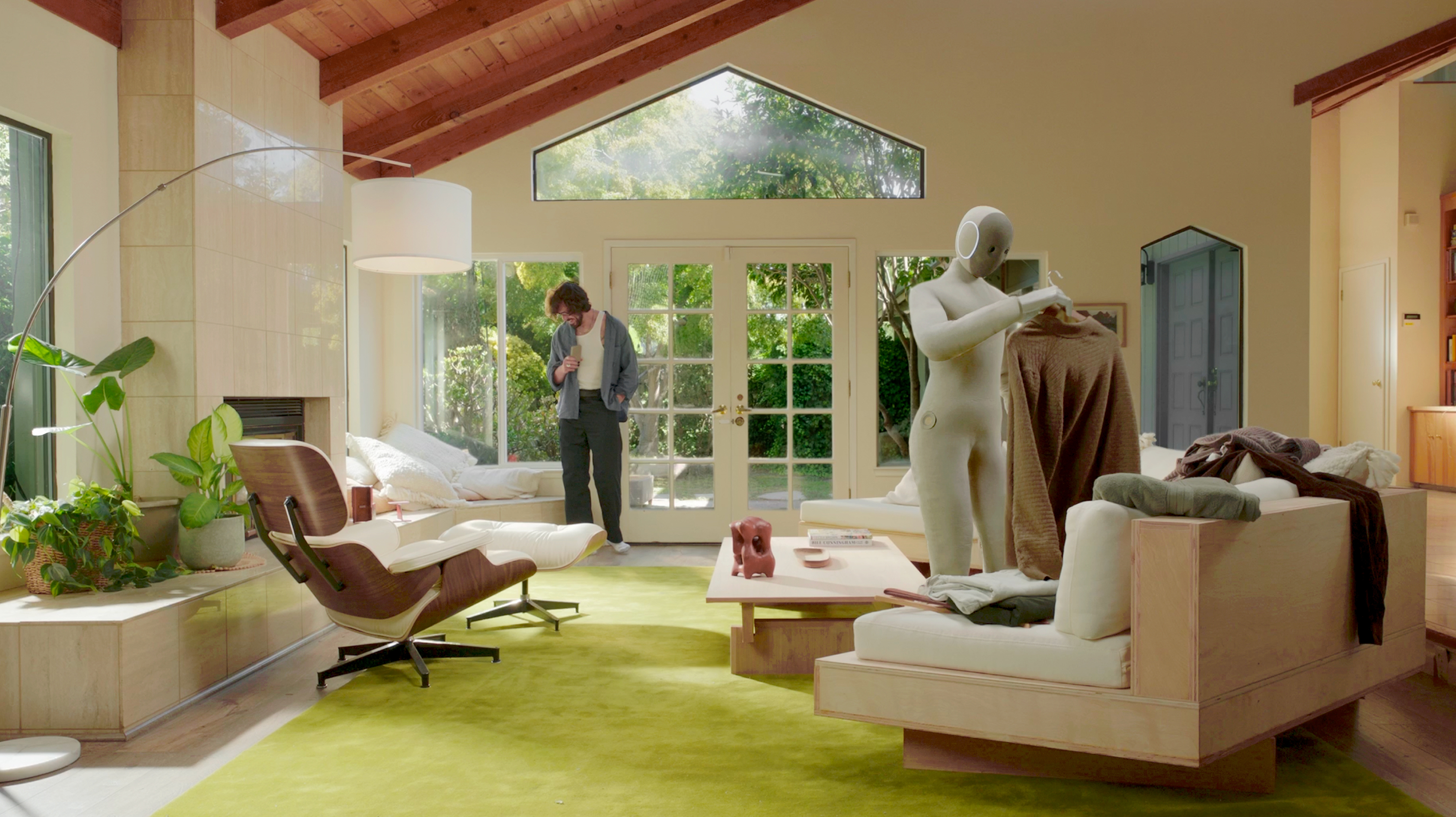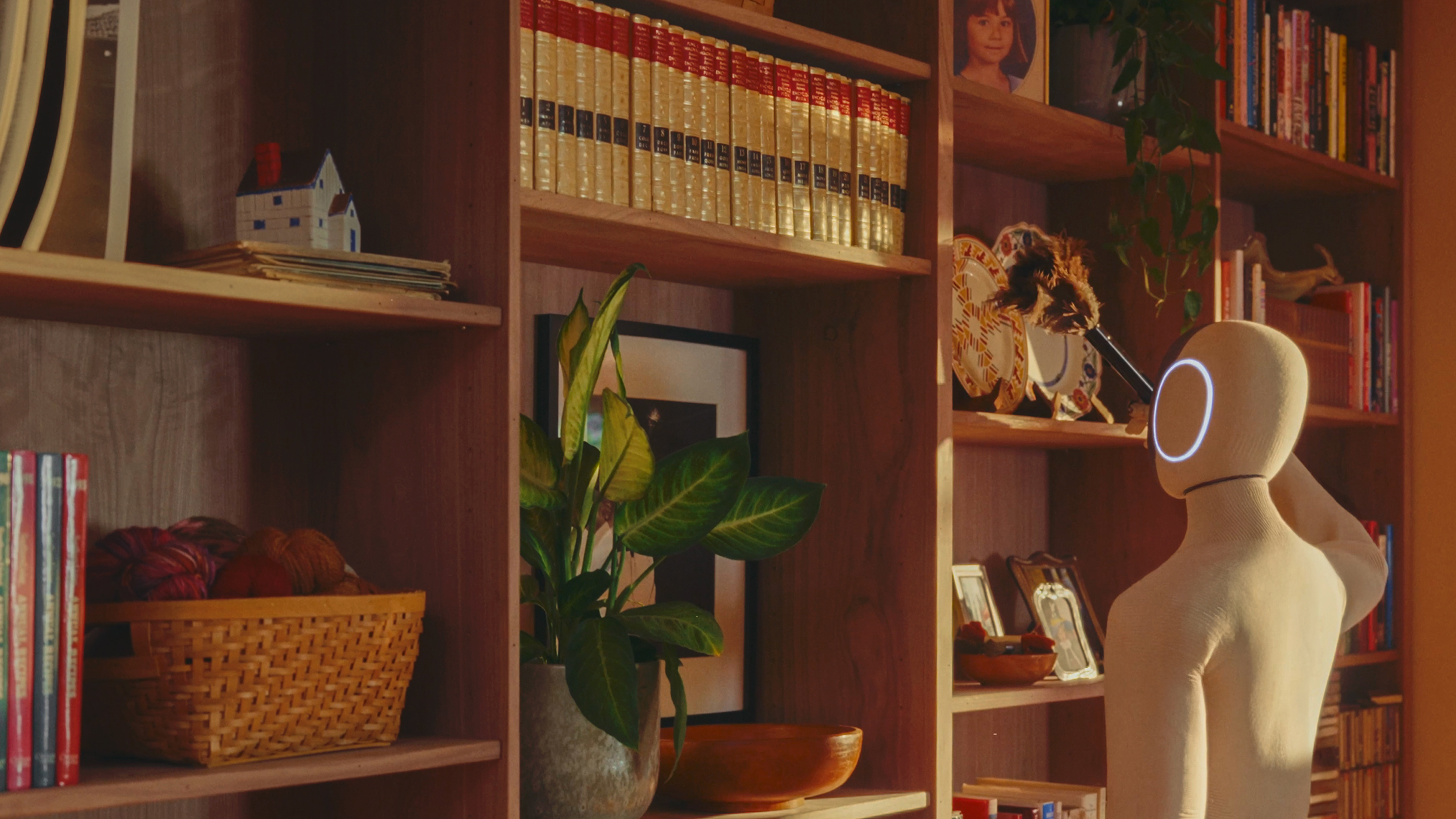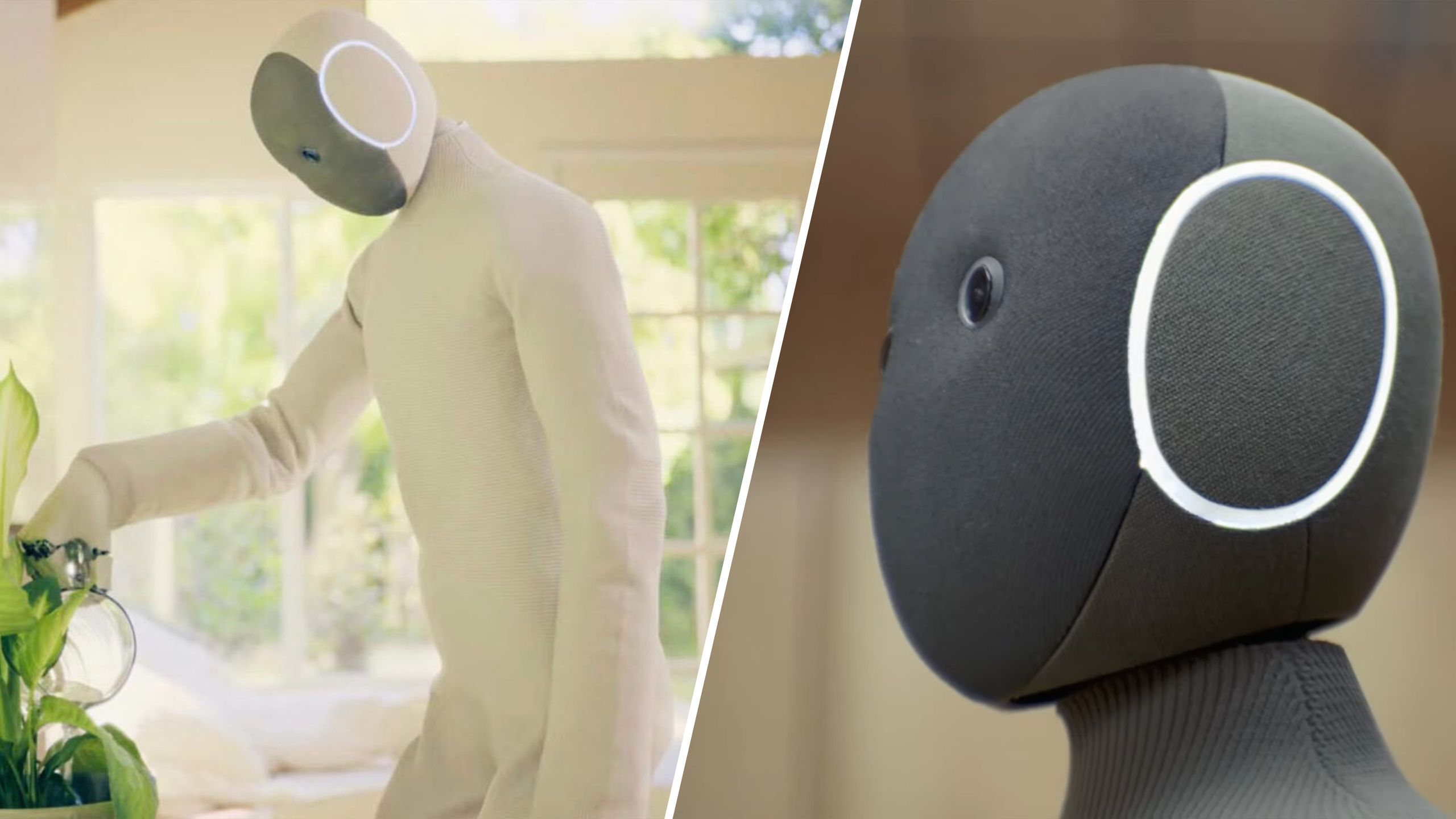You may have seen this cuddly/slightly creepy humanoid Robot yesterday, as the Neo Home Robot went viral across the internet. In fact, my fiancée sent it to me saying we have to get one!
Well, as we seem to get closer to a home robot buddy reality, there’s also a cautionary tale in here about expectations vs reality that I’m keen to get into. Because for $20,000, you can buy a dream: a full-fledged humanoid housekeeper. But the dream is nowhere near as it seems.
Meet Neo
On paper, Neo should be an earth-shaking announcement. A humanoid robot that you can buy to automate everyday chores and assist you. That’s massive for people with mobility issues or visions of a Jetsons-esque future, and it’s coming in 2026 for either $20,000 up front or $500/month. Pre-order now with a $200 refundable deposit and you’re off to the races.
It’s a 5ft 6-inch humanoid weighing in at 66 pounds with better drip than I could possibly pull off with that turtleneck, and a softer, less creepy-looking aesthetic based around using fabrics.
To see, its eyes are cameras, and to hear, there are four microphones with three speakers to talk. And to get stuff done, there’s a custom AI “vision-language transformer” powered by Nvidia silicon named Redwood.
According to 1X, this model is “tailored for the humanoid form factor and capable of performing end-to-end mobile manipulation tasks like retrieving objects for users, opening doors, and navigating around the home.”
But there’s a big catch here, and it’s the question that hit the likes of the Humane AI Pin and Rabbit R1 hard at launch too.
How much of it is real?

Watch On
There is a huge gap between what we are seeing now and what the company is promising. Credit to 1X’s Founder Bernt Børnich, as he’s been candid about this in his comments, which comes at odds with the marketed promises of a “consumer-ready humanoid robot.”
In the promo video, you get the impression of automation — a robot doing tasks around the house like tidying up and turning off the lights. In reality, as we’ve seen in a hands-on test with The Wall Street Journal, if the robot launches next year, you must accept human teleoperation. Remote control, essentially.

This is called “Expert Mode,” and it’s a human controlling the robot with a VR headset. This “human-in-the-loop” is an essential bridge to autonomy, to help collect more real-world data.
And it’s understandable why, because for that Redwood AI to work, there needs to be a massive amount of training data, which is gathered by doing this.
But that does also bring up some rather alarming privacy concerns. Namely, the intrusive real-time view a remote human operator has through those dual 8MP cameras, the vast amounts of data being collected to train the AI model, and the possible risk of bad actors gaining unauthorized access.
1X has responded to these concerns in several ways, such as required user consent for remote control, visual indicators (those light rings around the ear area) to show when a human is in control, and claims it can blur people in the video feed. But there’s still more questions than answers.
In Joanna Stern’s video, 100% of the work being done was completely teleoperated through Expert Mode, and if you look a little closer at that promo video, there are specifically two things that 1X is careful to claim are autonomous: answering the door and taking a cup away.
With that in mind, it’s fair of anyone to assume that everything else is remote controlled — making for a massive space between what it can do today, and the promise of what it can hopefully do in the future. Same as what we saw with the Humane AI Pin being touted as the post-smartphone device, and with Rabbit R1’s initial promises of agentic AI.
Pre-ordering on a dream

I appreciate the CEO’s candor on this, but more and more, the idea of pre-ordering has been stretched beyond recognition — selling the dream rather than the actual thing.
In the past (and I’m talking the 2000s and early 2010s), the expectations set to pre-orderers were pretty bang-on with the reality of what you’ve received. The thing you bought had to be ready when it shipped because of limitations on widespread internet connectivity and digital distribution.
But now, pre-orders don’t serve fans, they serve the cashflow that companies need, and it’s becoming more common that a “launch now, fix later” culture has become a crutch rather than a flexible “nice to have.”
Pre-ordering is (mostly) a risk you take on behalf of the company — similar in nature to backing a business on Kickstarter to launch something. And while I know a lot of us will not have a cool $20,000 to drop on a robot (this is definitely one for the very early adopters), this teaches a valuable lesson.
Just like we don’t review any products based on the promise of things to come, you shouldn’t order one based on that same promise either. Wait for the launch and wait for reviews.
Follow Tom’s Guide on Google News and add us as a preferred source to get our up-to-date news, analysis, and reviews in your feeds. Make sure to click the Follow button!








